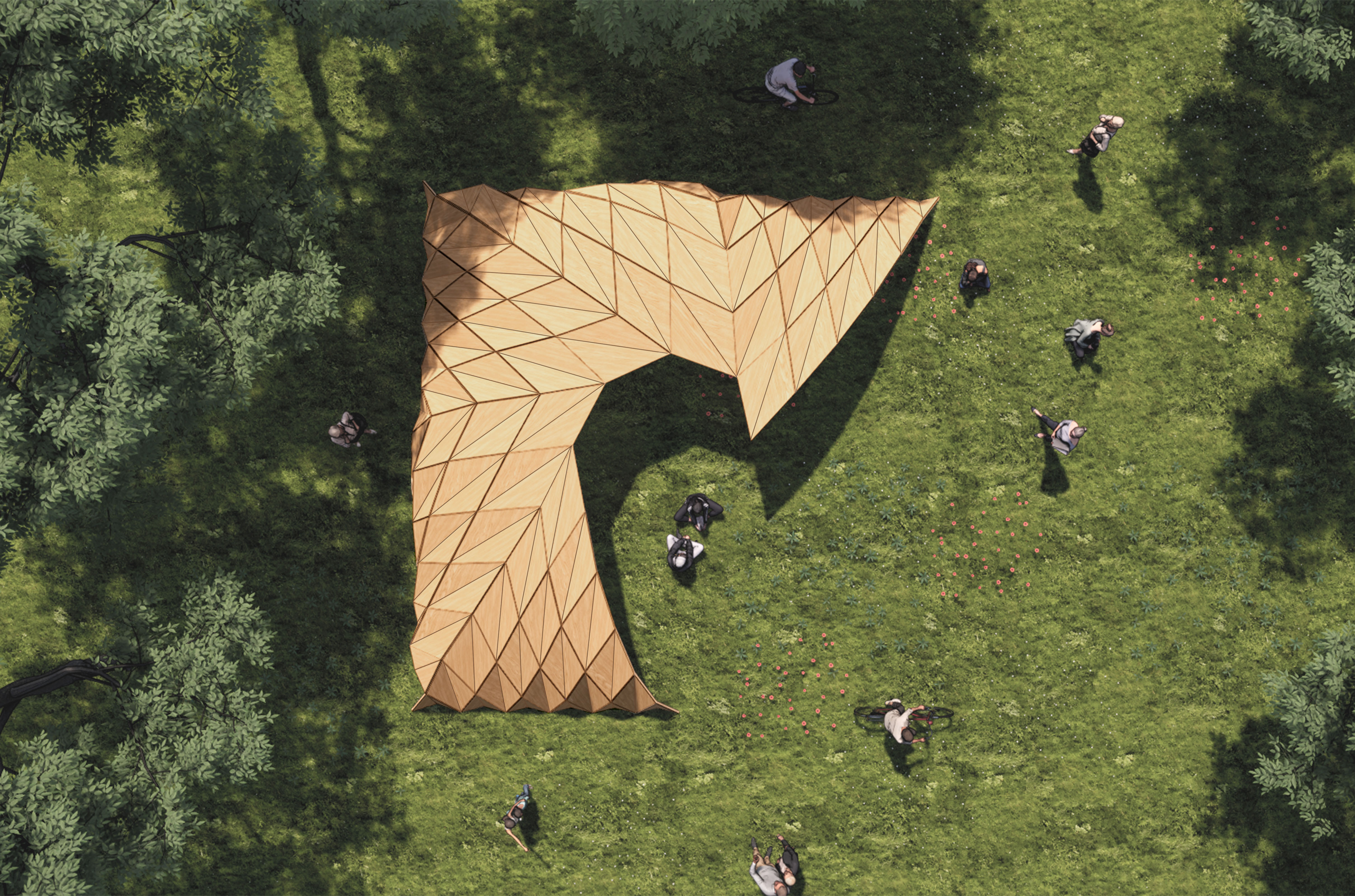
Have you heard of traditional Japanese paper folding techniques? Could they be used to shape buildings in the future?
One project that aims to do just that is the Origami Pavilion.
The initiative is the brainchild of Gabriele Mattei from Rome, who created the project after designing a folding structure with rigid panels made from the repetition of a triangular module with a Yoshimura crease pattern.
The idea was selected as one of 30 finalists for the 2021 New European Bauhaus award prizes in "Modular, adaptable, and mobile living solutions."
The project is based on algorithmic design. One to simulate the origami model's fold angle. And another to produce connecting pieces between fold lines and regulate dimensional parameters.
When the pavilion's fold angle varies, so do the building's panels' and connecting elements' positions inside the space.
Origami Pavilion developed a process consisting of the 5 using parametric modeling and digital fabrication. These are:
- Physical computer simulation of the origami fold.
- Choice of the fold angle to obtain a set of coherent connections.
- Generation of the cutting files of each element with relative labeling.
- Production via laser cutting.
- Assembly.
One of the functional characteristics of the project is the simplicity and speed of assembly. Using a labeling system, it is possible to reassemble dozens of elements into the pavilion like a puzzle. Ultimately, becoming an open structure, a permeable one that is welcoming & bright.
The project uses accessible, low-cost digital technologies, and its design can be adapted to different needs. The pavilion's final configuration can be defined by its users, who can also participate in its assembly. It can be used to provide shelter outdoors, as a pedestrian canopy, for social gatherings on university campuses, workplaces, and squares.
Wood as a construction material contributes to the building's sustainability, allowing for a harmonic combination with nature. Also, the manufacturing process uses laser cutting technology for materials, reducing waste substantially.
📸 © European Union
- Reference
- Prizes 2021, Award Finalist
- Project locations
- Rome, Italy
